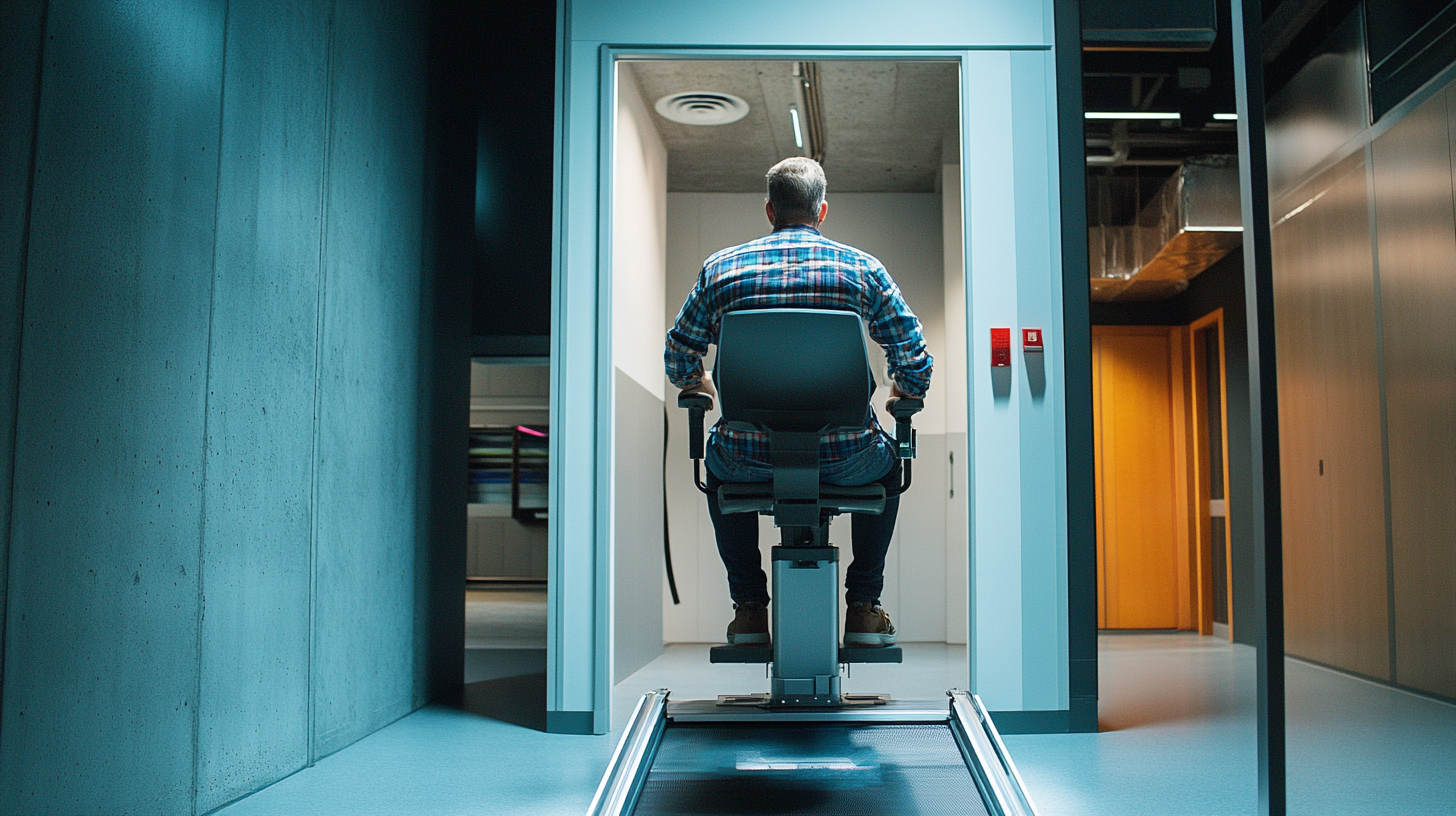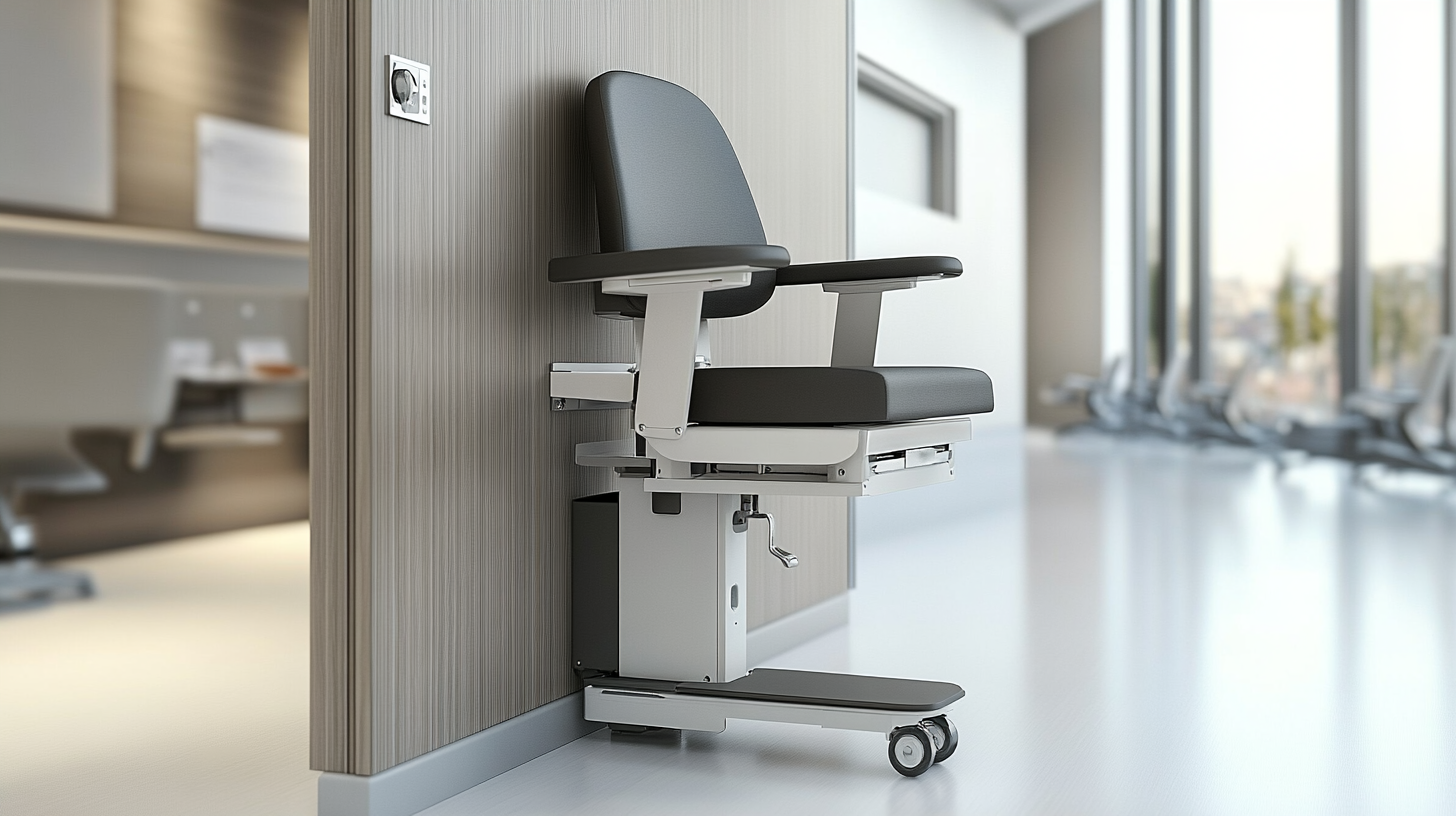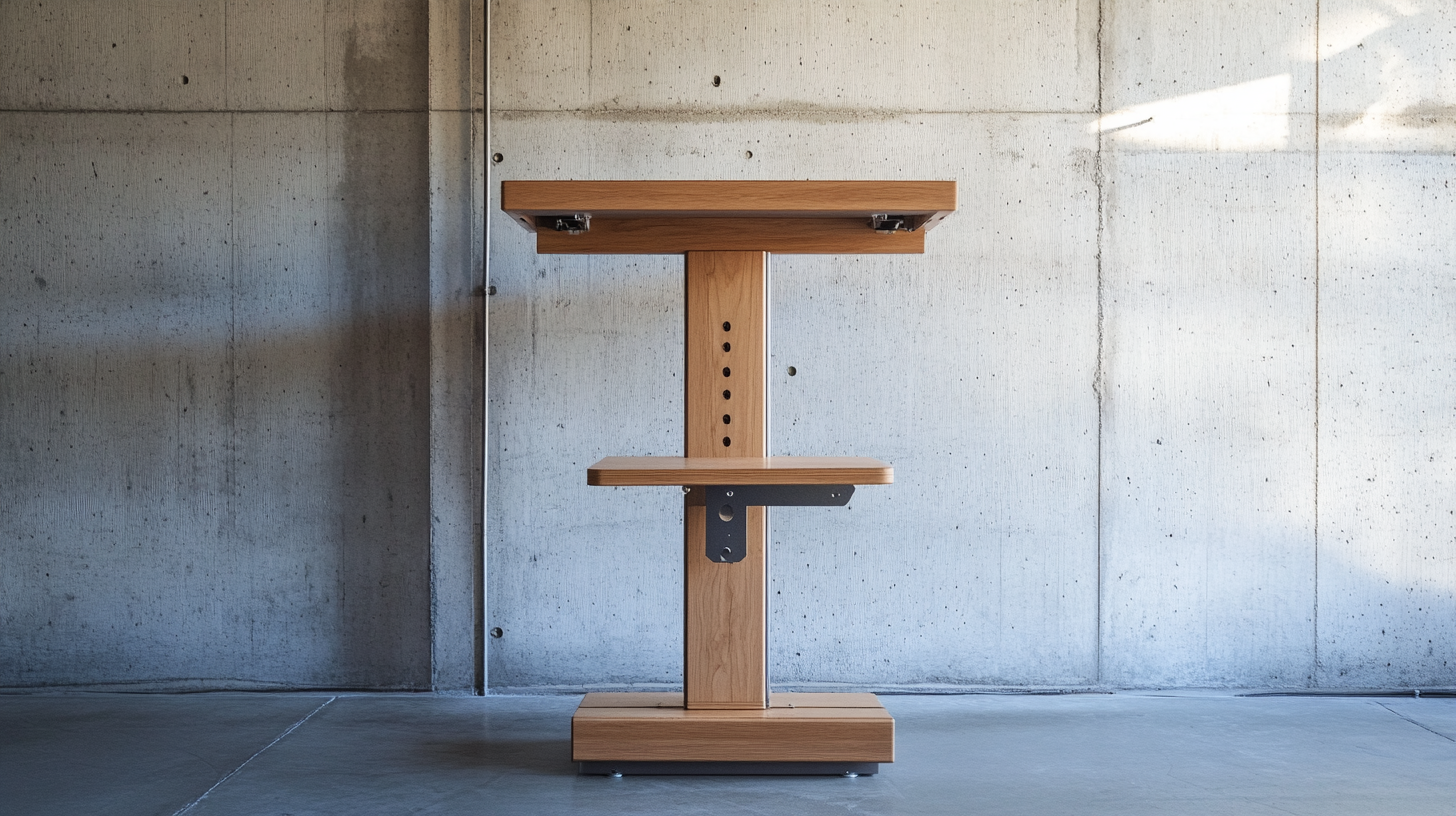Mastering the Use of Electric Sit to Stand Lifts for Enhanced Workplace Ergonomics
As workplaces evolve to prioritize employee well-being and productivity, ergonomics has emerged as a critical focus area. According to the Bureau of Labor Statistics, musculoskeletal disorders (MSDs) account for over 30% of all workplace injuries, often caused by repetitive movements and poor posture associated with traditional desk setups. Implementing ergonomic solutions not only enhances comfort but also boosts overall job satisfaction and efficiency. One groundbreaking solution gaining traction is the Electric Sit To Stand Lift, which facilitates seamless transitions between sitting and standing positions, allowing employees to adopt a more dynamic work posture.
Research conducted by the American Physical Therapy Association indicates that active workstations can significantly reduce the risk of developing chronic pain and fatigue. Furthermore, a study published in the Journal of Occupational Health Psychology highlights that employees who utilize ergonomically designed equipment report a 20% increase in productivity. By incorporating Electric Sit To Stand Lifts into the workplace, organizations can foster a healthier work environment that not only mitigates the risk of injury but also promotes consistent engagement and alertness among team members. This blog will explore best practices for mastering the use of Electric Sit To Stand Lifts, aiming to enhance workplace ergonomics effectively.

Understanding the Importance of Ergonomics in Modern Workplaces
In today’s rapidly evolving work environment, the significance of ergonomics cannot be overstated. Ergonomics, the science of designing the workplace to fit the worker, has become crucial as more employees spend prolonged hours sitting at desks. Poor ergonomic practices can lead to a range of issues, including chronic pain, decreased productivity, and increased absenteeism. By prioritizing ergonomic principles, modern workplaces can enhance employee comfort and well-being, ultimately fostering a healthier work atmosphere. Electric sit-to-stand lifts are one of the most effective tools in promoting ergonomic practices in the office. These lifts allow employees to seamlessly transition between sitting and standing, reducing the physical strain associated with prolonged sitting while encouraging movement. Regularly changing positions can alleviate pressure on the spine and joints, significantly lowering the risk of musculoskeletal disorders. Moreover, by incorporating such dynamic solutions into daily routines, businesses can boost employee morale and productivity, as workers feel more active and engaged. Investing in ergonomic solutions like electric sit-to-stand lifts not only supports individual health but also demonstrates a company’s commitment to its workforce. As businesses recognize the importance of a well-designed workspace, the shift towards ergonomic practices marks a significant step in enhancing overall workplace satisfaction. Ultimately, embracing ergonomics is not just about equipment; it's about cultivating a culture that values health, comfort, and efficiency in every aspect of work life.

The Benefits of Electric Sit to Stand Lifts for Employee Health
Electric sit-to-stand lifts are transforming workplace ergonomics by promoting healthier movement patterns and reducing the risk of musculoskeletal disorders among employees. According to a report by the National Institute for Occupational Safety and Health (NIOSH), more than one-third of all workplace injuries are related to lifting and movement. Moreover, a study published in the Journal of Occupational Rehabilitation highlighted that integrating sit-to-stand solutions can lead to a 32% reduction in reported back pain among staff.
The benefits of electric sit-to-stand lifts extend beyond mere injury prevention. Research from the American Journal of Preventive Medicine indicates that sedentary behavior is linked to an increased risk of chronic health conditions, including obesity, cardiovascular disease, and type 2 diabetes. Electric lifts encourage employees to transition seamlessly between sitting and standing, promoting better blood circulation and energy levels throughout the workday.
Furthermore, many companies have reported an increase in productivity as employees experience less fatigue and improved focus when using these ergonomic solutions. A survey conducted by the Human Factors and Ergonomics Society found that workplaces that implemented sit-to-stand workstations noted a 20% increase in worker satisfaction. The data clearly shows that electric sit-to-stand lifts are not only beneficial for employee health but also contribute to a more efficient and engaged workforce.

Key Features to Look for in Electric Sit to Stand Lifts
When selecting electric sit to stand lifts, understanding the key features can significantly enhance workplace ergonomics. A report from the Ergonomics Institute indicates that improper workstation setups can contribute to a 50% increase in workplace injuries, underscoring the need for adjustable solutions. Electric sit to stand lifts offer a practical means to combat this issue, providing the flexibility to alternate between sitting and standing, which has been shown to improve overall employee well-being and productivity.
One of the primary features to consider is the lift mechanism's weight capacity. According to the latest industry data, a majority of electric lifts on the market today can support between 150 to 400 pounds. Choosing a lift with a suitable weight capacity is crucial for accommodating a diverse workforce. Additionally, the speed of adjustment is another essential factor; top models offer adjustments of 1 to 2 inches per second, enabling seamless transitions that cater to various user heights.
Lastly, an ergonomic design that includes built-in memory settings can greatly enhance usability. A survey reported by the Occupational Safety and Health Administration (OSHA) found that users who can return to previously set heights are more likely to maintain consistent use of sit-to-stand solutions. Therefore, exploring electric sit to stand lifts that feature programmable height presets can lead to sustained ergonomic benefits, ultimately fostering a healthier workplace environment.

Statistics on Workplace Injuries and the Role of Ergonomic Equipment
Workplace injuries are a pressing concern, with statistics revealing alarming trends. According to the Bureau of Labor Statistics, musculoskeletal disorders account for over 30% of all workplace injuries, leading to significant downtime and productivity losses. These injuries often stem from repetitive strain and improper lifting techniques, particularly in industries such as healthcare, manufacturing, and warehousing. Addressing these issues through improved ergonomic practices is essential to fostering a safer work environment.
The use of ergonomic equipment, such as electric sit-to-stand lifts, plays a crucial role in mitigating these risks. These lifts promote better posture by enabling workers to easily transition between sitting and standing, reducing the strain on their bodies. By incorporating such equipment, workplaces can enhance employee comfort and reduce the likelihood of injury. Furthermore, research indicates that organizations that prioritize ergonomic solutions often see a decrease in both reportable injuries and associated healthcare costs, underscoring the economic benefits of investing in workplace ergonomics.
Implementing electric sit-to-stand lifts not only aids in enhancing worker safety but also contributes to a culture of health and well-being. When employees feel supported and valued, their productivity and morale can soar. Therefore, elevating workplace ergonomics through the effective use of specialized equipment is a meaningful step towards the prevention of workplace injuries and the promotion of a healthier workforce.
Best Practices for Implementing Sit to Stand Solutions in Offices
Implementing sit to stand solutions in offices is gaining traction as organizations strive to enhance workplace ergonomics and promote employee well-being. A recent report from the Occupational Safety and Health Administration (OSHA) highlights that more than 70% of office workers experience discomfort related to prolonged sitting, leading to reduced productivity and increased absenteeism. One of the most effective strategies to mitigate these issues is integrating electric sit to stand lifts into the workplace.
When introducing sit to stand solutions, it is crucial to consider the proper training and education of employees. According to a study published in the Journal of Physical Activity and Health, workplaces that provided training on the use of standing desks saw a 20% increase in employee utilization of these tools. Additionally, establishing a routine that encourages alternating between sitting and standing is essential; the ideal recommendation is to stand for 15-30 minutes every hour. This practice not only assists in alleviating discomfort but has also been linked to a significant improvement in concentration and overall job satisfaction.
Furthermore, the layout of the office should facilitate the ease of transitioning between sitting and standing. An ergonomic workstation setup, paired with electric sit to stand lifts, can significantly influence how employees interact with their environment. A report from the National Institute for Occupational Safety and Health (NIOSH) states that effective environmental adjustments can reduce the risk of musculoskeletal disorders by up to 40%. By creating a supportive workspace that promotes movement and flexibility, organizations can foster a healthier, more dynamic workplace culture.

